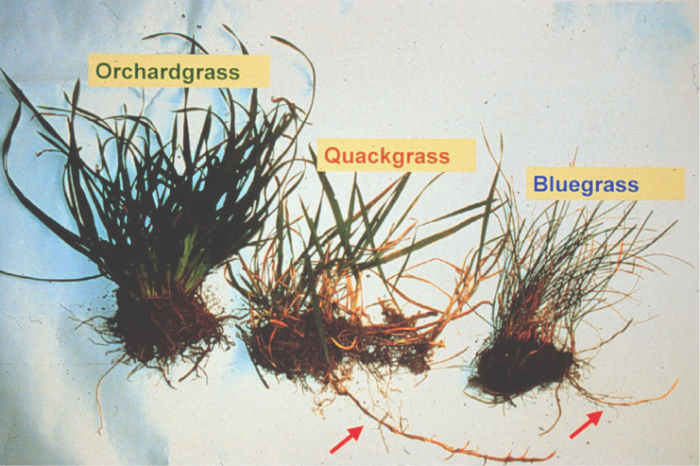

The selected GC were compared with the spontaneous vegetation of the area (Spon1), mainly composed by mallows, Convolvulus arvensis, Diplotaxis virgata, Lolium rigidum and Taraxacum officinale. After the first year, Brachypodium was established from a groundcover strip which had been left to self-seed the first year therefore this species was self-seeded the following seasons. Brachypodium distachyon was only sown the first year at a rate of 100 kg ha −1 of commercial product, 30 kg seeds ha −1, and left on the surface following commercial recommendations. The doses of seeds were 10 and 3 kg ha −1 for common mustard and rocket, respectively, which were sown for 3 years.

Cruciferous seeds were sown and buried at 0.5 cm depth following the procedures established in previous field studies ( Alcántara et al. Eruca vesicaria and Sinapis alba seeds were previously collected from spontaneous wild populations and replicated in the Andalusia Research Centre, IFAPA Alameda del Obispo (Córdoba, Spain). The sowing dates were between October and November depending on weather conditions. A spontaneous cover consisting of typical weed flora of the area was the control treatment. The groundcovers were: a commercial grass cover called ‘Vegeta’ ( Brachypodium distachyon L.) (BRA), and two cruciferous species, rocket ( Eruca vesicaria (L.) Cav.) (ERU) and common mustard ( Sinapis alba L. Establishment of groundcovers are an efficient tool for atmospheric carbon sequestration and to protect the soil from erosion. Sinapis alba obtained the best result with 2.56 Mg SOC ha −1 yr −1. The increments of SOC in the first 20 cm of soil reached higher values with crucifers and grass than legumes.

The carbon release from groundcovers was studied and soil organic carbon (SOC) analysed during the decomposition period to assess the atmospheric carbon fixation. In both fields the species were sown and compared with the spontaneous vegetation of the area. In an experimental field, a grass ( Brachypodium distachyon) and two crucifers ( Eruca vesicaria and Sinapis alba) were used in the other experimental field, three legumes were sown: common vetch ( Vicia sativa), bitter vetch ( Vicia ervilia) and hairy vetch ( Vicia villosa). The experiment was conducted during three growing seasons in two olive orchards in Andalusia (Spain). The aim of this study was to assess the carbon sequestration potential of several species used as groundcovers in two olive orchards. Establishment of groundcovers (GC) is an efficient practice to reduce soil and nutrient losses in olive orchards, so they can act as a sink of atmospheric carbon and improve soil fertility.


 0 kommentar(er)
0 kommentar(er)
